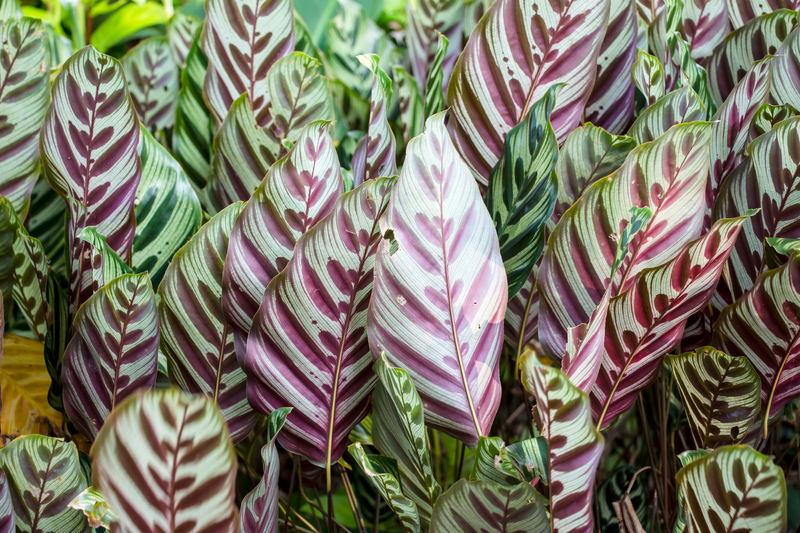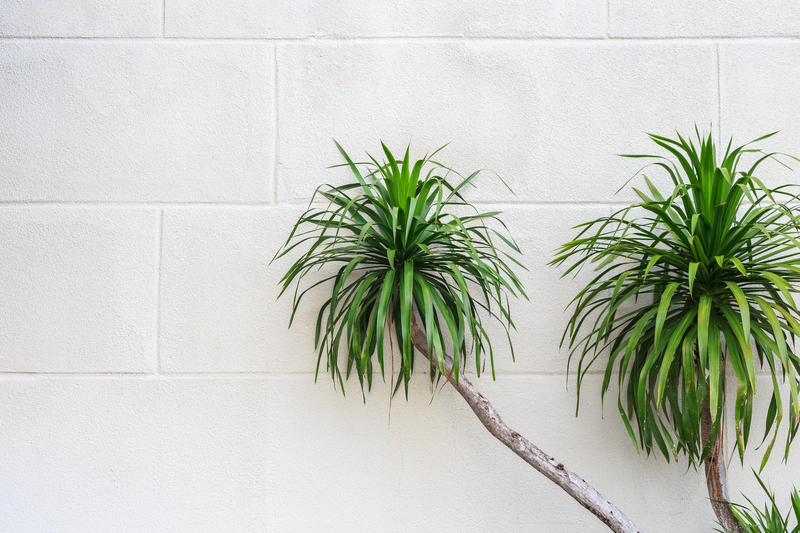Achieve Year-Round Greenery: 10 Evergreen Trees for Small Gardens
Want to keep your garden verdant no matter the season? If you have a compact yard, the dream of a lush oasis doesn't have to be out of reach. By choosing the right evergreen trees for small gardens, you can ensure a tranquil, green sanctuary all year round. Suitable evergreens add structure, privacy, and beauty even in the depths of winter. In this article, we'll explore ten of the best evergreen trees perfect for small spaces, tips for how to plant and maintain them, and how to use them for the biggest impact in compact landscapes.
Why Choose Evergreen Trees for Small Gardens?
Adding evergreen trees to your small garden offers multiple benefits:
- Season-Long Color: Unlike deciduous trees, they don't lose their leaves, providing uninterrupted greenery.
- Privacy & Screening: Great for urban gardens where fencing may not provide enough privacy.
- Wildlife Shelter: Evergreen foliage acts as a crucial habitat for birds and insects year-round.
- Low Maintenance: Most evergreens need only minimal pruning and care once established.
- Visual Structure: They form the backbone of a small garden design, adding definition in winter's bare landscape.
When space is limited, the choice of evergreen tree is critical. It's essential to select species that stay small, behave well in pots if necessary, and don't develop invasive roots or excessive size.

Top 10 Evergreen Trees for Small Gardens
1. Japanese Maple (Acer palmatum 'Ever Red')
Height & Spread: Up to 8-10ft tall and wide
The Japanese Maple, specifically the 'Ever Red' cultivar, is prized for its finely divided, purple-red leaves that maintain vibrant color through the seasons. Its compact size and elegant structure make it ideal for small gardens and containers. While not a true evergreen, 'Ever Red' does hold onto much of its foliage into early winter, especially in milder climates, offering near-continuous color.
2. Boxwood (Buxus sempervirens)
Height & Spread: 4-6ft high, easily pruned to shape
Boxwood is one of the best-known evergreen trees for compact gardens. With its dense, glossy green foliage and slow growth, it's perfect for topiary, hedging, or even as a standalone specimen. Boxwoods thrive in pots and can be shaped into beautiful balls or pyramids.
3. Bay Laurel (Laurus nobilis)
Height & Spread: 7-12ft tall, but easily maintained at smaller sizes
The Bay Tree is prized for its aromatic leaves, which are a kitchen staple. Its upright, slow-growing nature makes it suitable for growing in pots or as a clipped standard in the ground. Bay laurels enhance your garden with year-round glossy, dark green leaves and even produce small yellow flowers and black berries if left to mature.
4. Portuguese Laurel (Prunus lusitanica)
Height & Spread: Up to 12ft tall, but trims well down to 6ft
Portuguese Laurel provides attractive, deep green leaves on red stems and is renowned for its neat, manageable size. It serves beautifully as a privacy screen or topiary, handling shaping and trimming with ease--ideal for structured small gardens that crave a formal aesthetic.
5. Holly (Ilex aquifolium 'Pyramidalis')
Height & Spread: 6-8ft tall and 3-4ft wide
Known for its spiky, glossy leaves and bright red berries, the Pyramidalis Holly makes a striking, upright evergreen for limited spaces. Its narrow, columnar growth means it won't overwhelm your garden, and it also attracts birds with its berries during the winter months.
6. Japanese Privet (Ligustrum japonicum)
Height & Spread: 6-10ft tall and 4-6ft wide
Japanese Privet offers thick, lush foliage, tolerates pollution, and is easily pruned to size for hedges or as single accent trees. Their waxy, dark green leaves remain vibrant all year, and small white flowers in spring provide scent and beauty.
7. Strawberry Tree (Arbutus unedo)
Height & Spread: 8-12ft tall and wide; takes pruning well
A lesser-known gem, the Strawberry Tree brings interest to every season--it has neat evergreen foliage, clusters of urn-shaped white flowers in autumn, and unusual red fruits that resemble strawberries. Its moderate growth makes it a standout specimen in small gardens or large containers.
8. Dwarf Alberta Spruce (Picea glauca 'Conica')
Height & Spread: Up to 6ft tall, 3ft wide in 10 years
If you're searching for a classic conifer that won't outgrow your garden, the Dwarf Alberta Spruce is ideal. Its tight, cone-shaped form and soft, bright green needles stay attractive all year. It's perfect for foundation planting, borders, or containers.
9. Olive Tree (Olea europaea)
Height & Spread: 6-12ft tall, but easily trained or pruned smaller
Increasingly popular for their elegant, silvery leaves, olive trees bring Mediterranean style to any urban garden. They're surprisingly hardy in many climates and suit pots or small beds, adding sophisticated structure and subtle evergreen beauty.
10. Cotoneaster (Cotoneaster franchetii)
Height & Spread: 6-8ft tall and wide
Cotoneaster is admired for its arching branches, glossy, deep green leaves, and a bounty of orange-red berries that birds adore. It has a tidy, manageable habit for smaller spaces and provides year-round foliage, plus white or pink spring flowers.
Tips for Growing Evergreen Trees in Small Gardens
1. Match Tree Choice to Your Space
Consider each tree's mature height and spread, as well as root behavior. Opt for slow-growing or naturally dwarf varieties where possible. Some evergreens work better in containers, which can also restrict root growth.
2. Use Containers and Pots
If your garden soil is poor or your space is paved, many of these compact evergreens thrive in large pots. Just ensure adequate drainage and plan to repot or top-dress every few years.
3. Prune for Shape and Size
Don't be afraid to prune your evergreens. Most on our list can be trimmed to shape or size without harm. Prune after the risk of frost has passed, and never cut back into old wood with no foliage, as many evergreens don't regrow from it.
4. Ensure Good Drainage
Poor drainage can kill even the hardiest evergreen trees. Elevate pots onto feet and add grit to garden beds if necessary to prevent waterlogging, especially in winter months.
5. Feed and Mulch Regularly
Small garden evergreens benefit from a controlled-release fertilizer in spring and a layer of bark mulch to lock in moisture. This helps them stay healthy and glossy all year.
How to Incorporate Evergreens into Small Garden Design
Evergreen trees can punch above their weight in small garden design. Consider these creative uses:
- Accent Tree: Use a single, striking evergreen, like a holly or olive, as the garden's central focal point.
- Living Walls: Plant slim, upright varieties close together for an evergreen privacy screen that beats boring fences.
- Year-Round Topiary: Boxwood, holly, and bay trees can be shaped into spheres, cones, or spirals for formal layouts.
- Container Gardening: Compact evergreens are perfect in pots beside doors or clustered on patios, bringing structure year-round.
- Wildlife Haven: Holly, strawberry tree, and cotoneaster all provide valuable shelter and food for birds, even in urban settings.
Key Maintenance Tasks for Healthy Evergreen Trees
Even low-maintenance trees thrive with a little standard care:
- Watering: Keep roots moist--especially in the first two years after planting. Don't let containers dry out in summer.
- Mulching: Apply 1-2 inches of organic mulch to insulate roots and reduce weeds.
- Feeding: Use a slow-release fertilizer in spring and again in mid-summer if growth is slow or leaves look pale.
- Pruning: Shape after frost; remove dead, damaged, or crowded branches as needed.
- Pest & Disease Monitoring: Regularly check for aphids, scale, or fungal problems and treat promptly if they occur.
Common Mistakes to Avoid When Planting Evergreens in Small Spaces
- Overplanting: It's tempting to squeeze in multiple trees, but overcrowding stunts growth and promotes disease. Allow room for mature size.
- Poor Drainage: Waterlogged roots lead to root rot. Always improve drainage if your soil is heavy.
- Neglecting Pruning: Left alone, even "dwarf" evergreens can outgrow tiny gardens. Plan annual shaping to maintain control and health.
- Ignoring Site Conditions: Choose species that match your garden's sunlight, soil, and shelter for the best results.

FAQ: Evergreen Trees for Small Gardens
What is the best time of year to plant evergreen trees?
Planting in early spring or fall gives roots time to establish before summer heat or winter cold. For container-grown evergreens, any mild season works if you water well.
Can I grow evergreen trees in containers long-term?
Yes! With regular re-potting and feeding, many dwarf evergreens will thrive for decades in pots--just be sure to choose containers large enough for root growth and stability.
Which evergreen trees are best for privacy screens?
Boxwood, holly, and Portuguese laurel are all excellent choices. For strict upright screens, choose columnar hollies or tightly clipped boxwoods.
Do evergreen trees need a lot of maintenance?
Most evergreen trees for small gardens are low maintenance if planted correctly. Occasional watering, feeding, and pruning are all that's required.
Conclusion: Enjoy Year-Round Greenery in Even the Smallest Garden
With careful selection, even the tiniest yard can bask in permanent, soothing greenery. The right evergreen trees for small gardens bring privacy, structure, and life--no matter how urban your setting or how cold the season becomes. By choosing from our top 10 suggestions, and following the care and design tips above, you can enjoy vibrant foliage, subtle flowers, and even wildlife all year round. Create your everlasting oasis today, and experience the benefits of year-round green in your unique outdoor sanctuary.